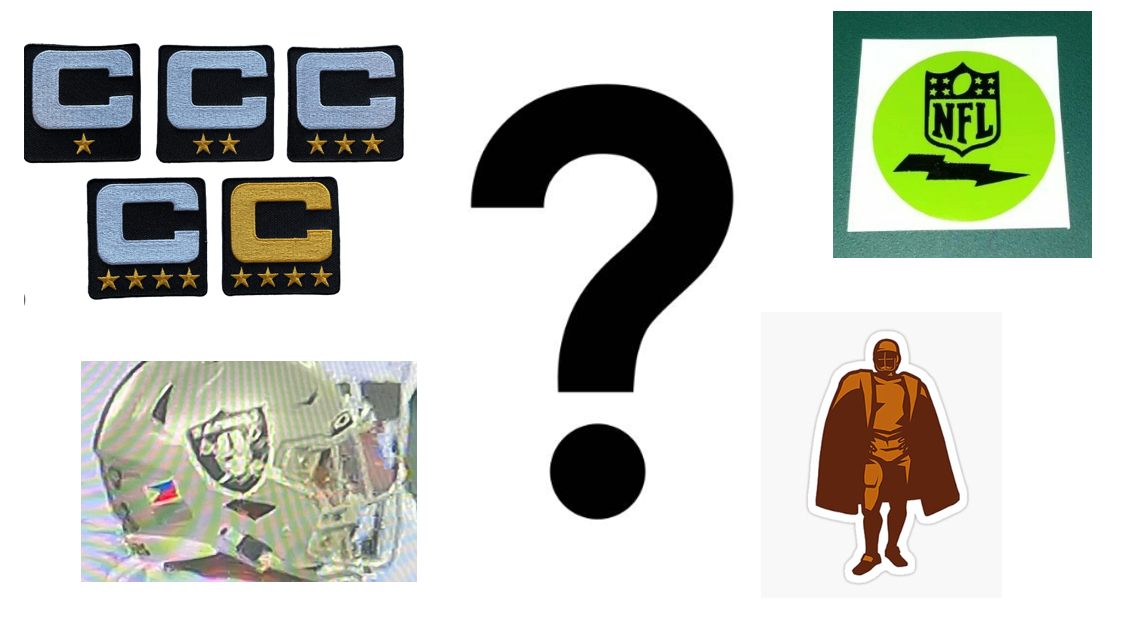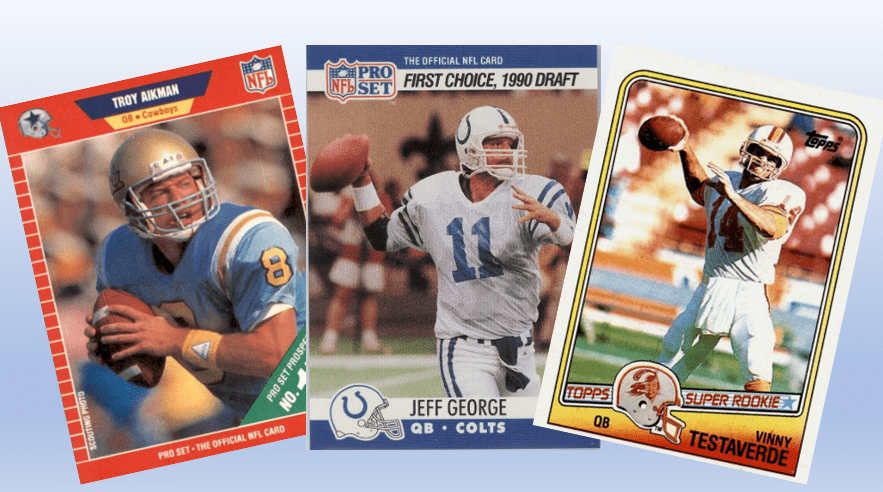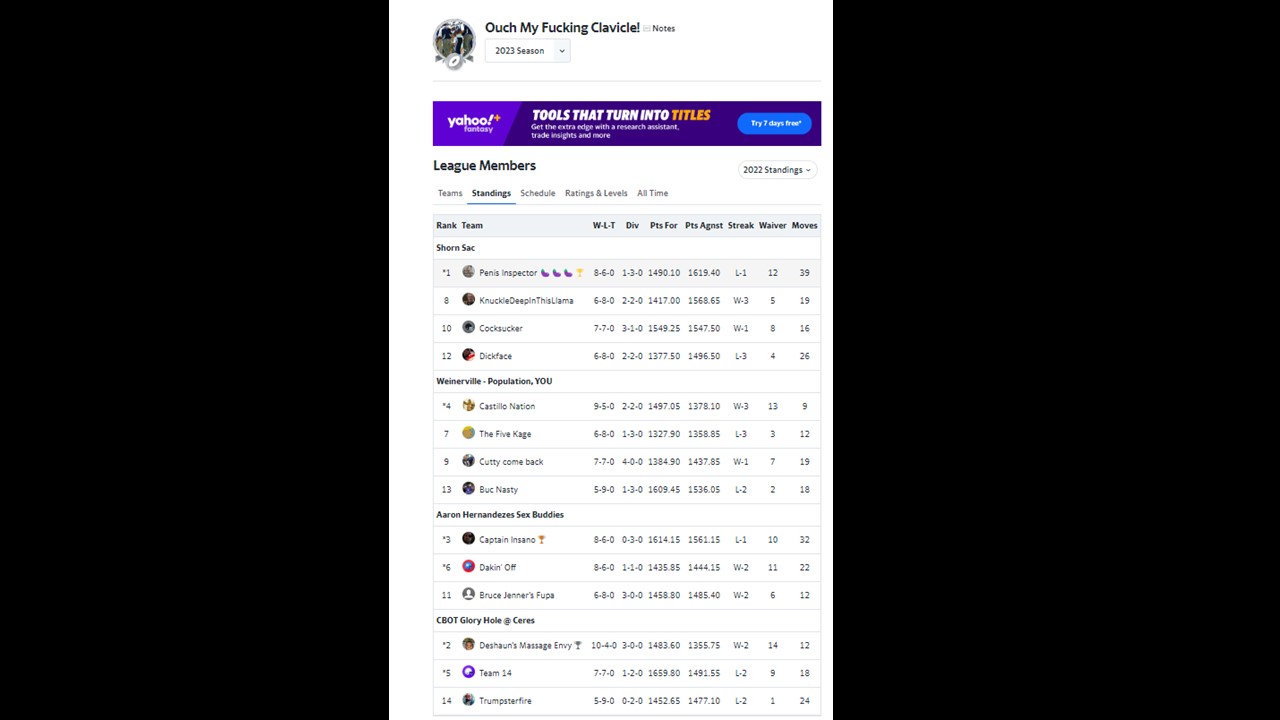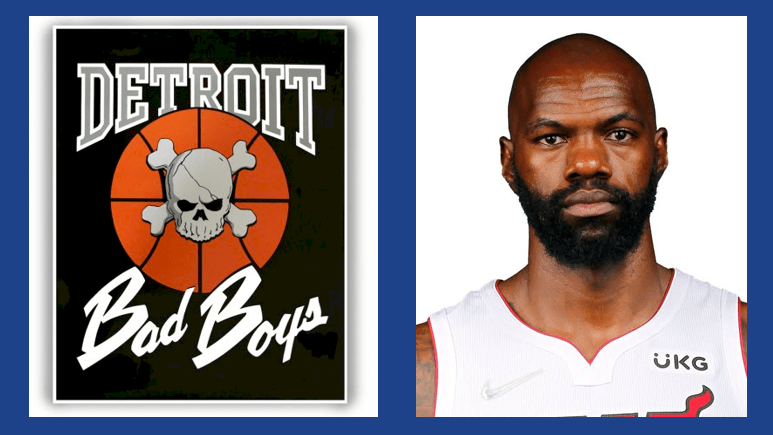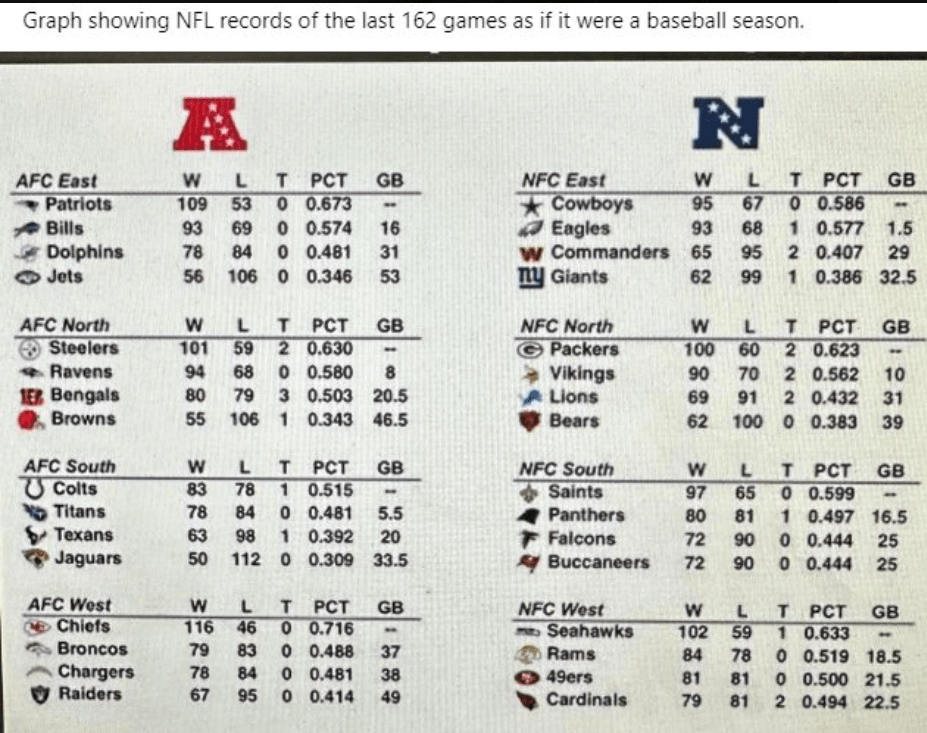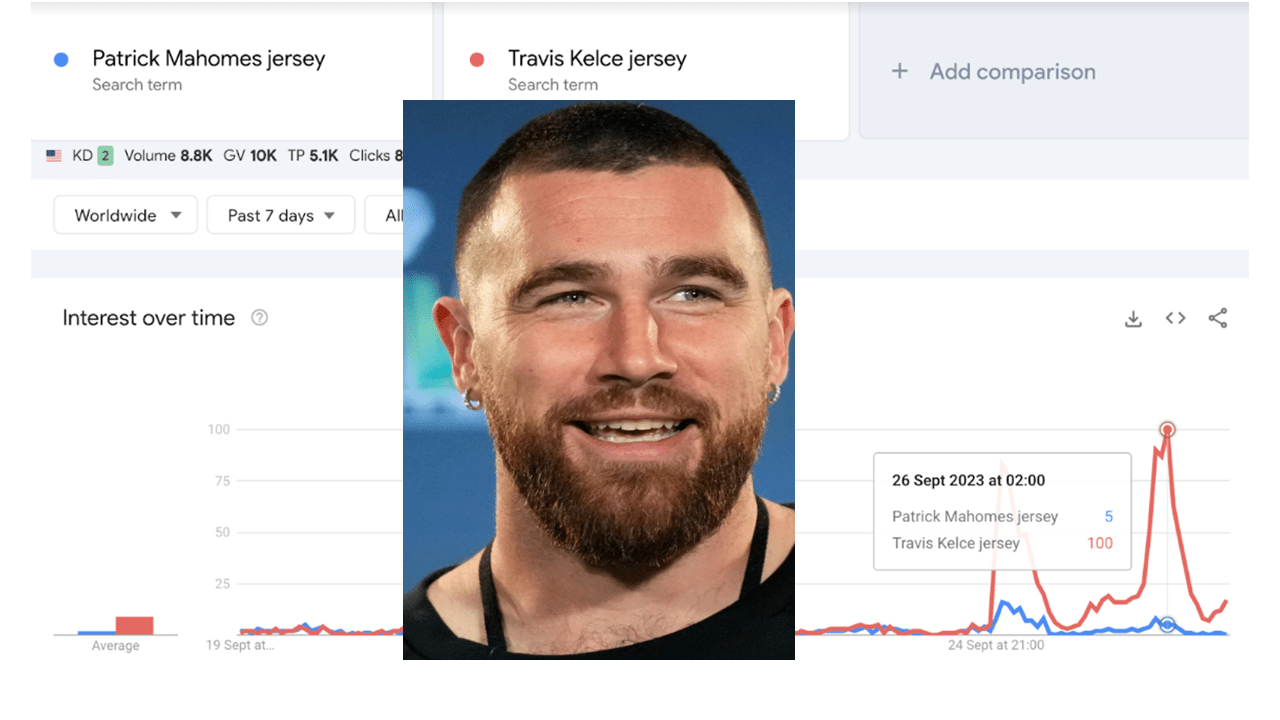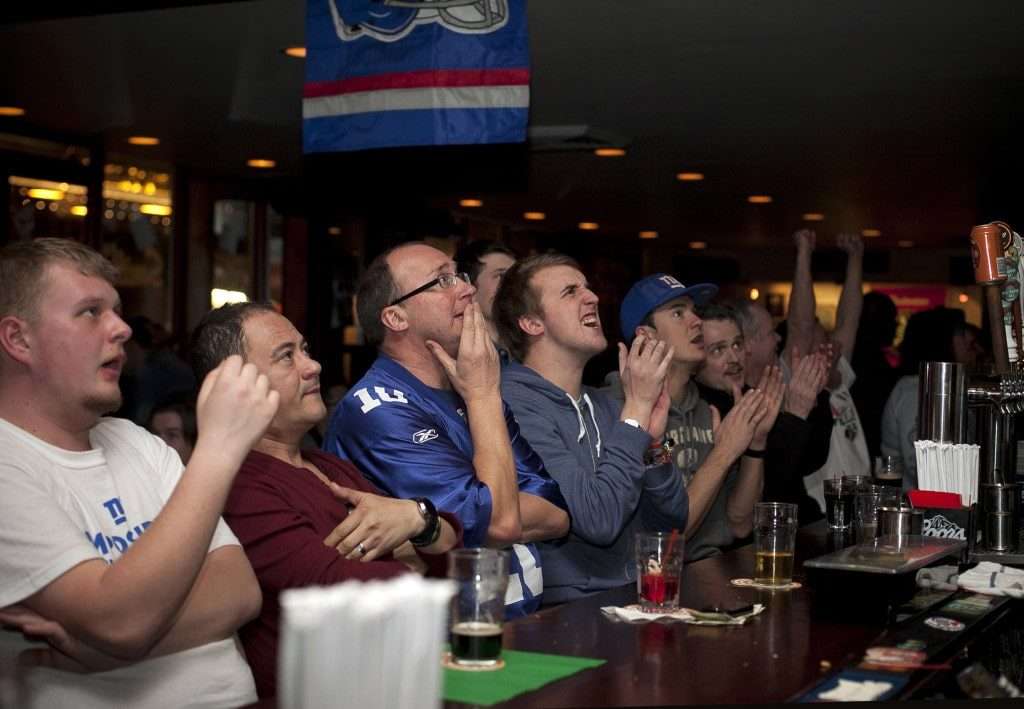
According to Nielsen’s average audience estimates, a staggering 123.7 million viewers watched Super Bowl LVIII on Sunday, February 11. The broadcast on CBS alone attracted an average of 120.3 million viewers, marking it as the most-watched single-network telecast to date. And made it the most-watched program ever.
The number of how many people watched the Super Bowl has grown roughly every year from the first Super Bowl until 2015. Then it experienced an abrupt downturn – from 114.8 million in 2015 to 91.6 in 2021.
In the graphic below, you can see the variance in dates.
Here are the top 10 most-watched Super Bowls prior to LVII in 2024:
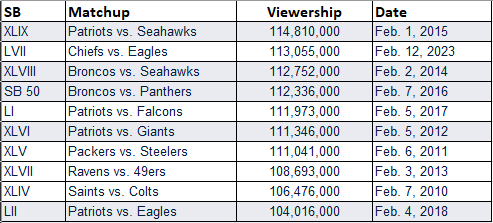
What is the most-watched Super Bowl of All-Time?
The most recent Super Bowl pitting the Chiefs vs. 49ers had the most viewers via TV.
The 2023 Super Bowl featuring the Chiefs vs. the Eagles had 115 million viewers across all platforms. It is the second-most watched Super Bowl of all-time.
In 2015, 114.4 million people watched the Patriots defeat the Seahawks in Super Bowl 49, making it the most watched Super Bowl in history per Nielsen at the time.
To visualize it another way, over 77% of households using television were tuned in to the Big Game at the time of the broadcast. 🤯
The 2015 Super bowl is now the 4th most-watched broadcast in US television history, behind the Super Bowl 2024 and the 1969 Apollo 11 moon landing.
What is the most-watched Super Bowl Halftime Show of All-Time?
Usher’s Super Bowl halftime performance averaged 129.3 million viewers — the most-watched Super Bowl halftime on record and a 7% increase from Rihanna’s last year (121 million).
Why doesn’t the number of people who watch the Super Bowl increase every year?
The zillion-dollar question. If the NFL could figure this out they’d probably just microchip us all just to make sure we get the push notification.
You would guess a lot of it is determined by matchup, thought the stats below don’t necessarily support that.
It has to bother the league that even though the NFL continues to become more and more popular, that that popularity is not reflected in a year over year increase.
For example, the 2022 Super Bowl featuring the Rams defeating the Bengals averaged 101 million total viewers.
That was up from Super Bowl 2021 which featured the Chiefs vs. the Buccaneers with 95.8 million.
The 2021 Super Bowl was the lowest watched Super Bowl since 2007’s Super Bowl matchup between the Colts and Bears (93.1 million).
If the NFL is a quarterback driven league, why wouldn’t a matchup of Tom Brady versus Patrick Mahomes attract more viewers?
Weirder still, why would a matchup of Mahomes vs. Jimmy Handsome aka Jimmy Garoppolo in the previous year beat PM15 vs TB12?
The 2020 Super Bowl, featured the Kansas City Chiefs rally against the San Francisco 49ers in a fourth quarter comeback, was watched by 102 million viewers in the United States.
The 2019 Super Bowl between the Rams and Patriots was watched by 98.9 million people. 98.9 million was the lowest since 2008 (Patriots lose to Giants on Tyree Helmet Catch), when 97.4 million tuned in.
The 2017 Super Bowl Patriots vs Falcons attracted 111.9 million viewers. But took a dip in 2018 when 104 million viewers watched the Eagles defeat the Patriots in Super Bowl 53.

When you see the data laid out like this, you can see why the NFL has a problem on their hands in regards to growth.
4 of the last 5 years have recoiled to 2009 levels.
Queue Travis Kelce + Taylor Swift “romance” and inject a ton of Swifties! It makes a lot of sense.
Is the number of people who watch the Super Bowl cannibalizing itself/a catch-22 for the league?
And I’m not coyly making a smooth allusion to two-time Super Bowl champion and Dallas Cowboys running back Emmitt Smith. Ok, yes I am.
The improvement of the home viewing experience of NFL games has been a growing concern for the league.
As a fan, why invest four to five hours of your life and several hundred dollars into leaving the comfort of the couch, to ultimately interact with bathrooms, and people, that feel like they haven’t been appropriately cleaned in decades?
Like this man falling asleep at the 2020 Super Bowl:
The continuous shift in fan viewership will only become more of a threat to sports stadiums if they don’t improve the fan experience to keep up with evolving fan needs.
The University of Florida’s Sport Management program, created this infographic, which outlines changing fan preferences and the ways that stadiums across major sports leagues are working to meet these needs by undergoing major upgrades to their infrastructure and amenities.
But honestly how many of the people who attend the Super Bowl and watch it in person are actual fans?
Aren’t they all just corporate executives at this point?
Case in point: the average price of a ticket for this year’s Super Bowl 58 is $8,000 for a single ticket, which is 35 percent more expensive than the $5,997 “get-in” price of the Super Bowl this time last year.
Which is pretty sad when you consider the humble beginnings of the game.
So humble in fact it didn’t even sell out. The passage of time illustrated by this side by side photo comparison.
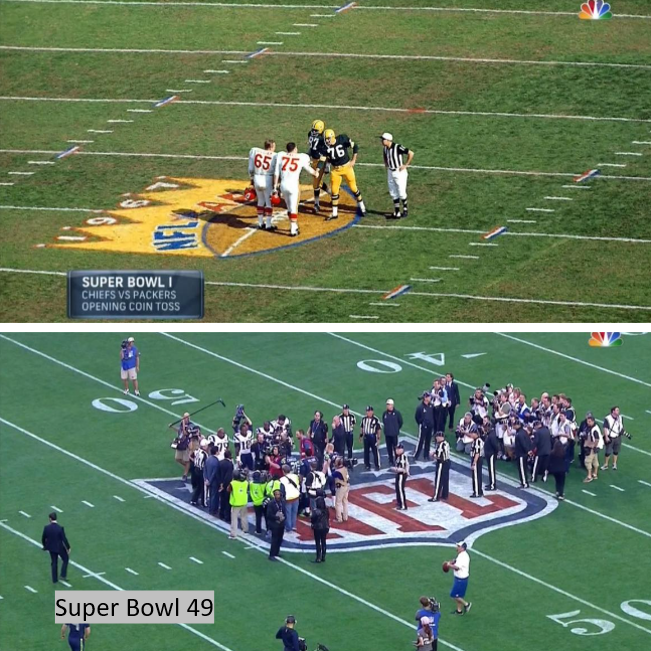
Some Random Factoids To Consider While You Are Watching The Super Bowl:
- The Super Bowl has never reached less than 61% of U.S. television viewership.
- Super Bowl 50 is the only game that has not used Roman numerals because NFL designers disliked how the Roman numeral for 50 – an L – looked.
- Super Bowl halftime performers don’t get paid. The NFL only covers production costs. but, most acts receive a huge boost in sales. For example, Justin Timberlake’s music sales rose 534% following his 2018 halftime performance.

